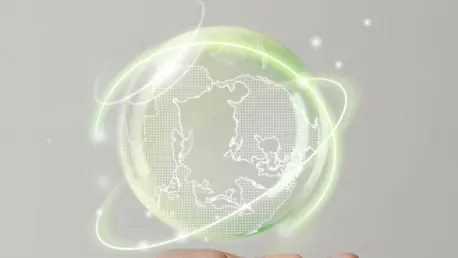The integration of Internet of Things (IoT) technology into the renewable energy sector marks a significant shift in how energy is generated, distributed, and consumed. This evolution is transforming industry practices, driving efficiency and reliability in unprecedented ways. With the increasing adoption of renewable energy sources like solar and wind, data-driven insights from IoT enable more sophisticated management and optimization of these systems. Despite the technological advancements, challenges such as data security and connectivity must be addressed to fully leverage IoT’s potential. The interconnectedness of devices and real-time data collection are pivotal elements that highlight IoT’s transformative role in renewable energy.
Enhancing Efficiency and Reliability
Real-Time Monitoring and Predictive Maintenance
One of the central aspects of IoT in renewable energy is the profound impact it has on enhancing efficiency and reliability through real-time monitoring and predictive maintenance. IoT sensors attached to various renewable energy devices, such as solar panels and wind turbines, allow for continuous performance tracking. For instance, sensors on solar panels can measure parameters like temperature, sunlight exposure, and electrical output. This data is transmitted in real-time to centralized systems where it is analyzed. When deviations from the optimal performance are detected, alerts are generated, prompting maintenance teams to take action before minor issues snowball into significant problems.
Similarly, IoT devices on wind turbines track rotational speed, vibration, and other critical metrics, enabling the forecasting of potential performance issues. Early identification of anomalies helps in scheduling proactive maintenance, which not only prevents unexpected downtimes but also extends the lifespan of the equipment. This proactive approach contrasts sharply with the traditional reactive maintenance, where system failures often lead to prolonged outages and higher repair costs. Ultimately, the infusion of IoT in predictive maintenance ensures that renewable energy systems operate at peak efficiency, offering a reliable and consistent energy supply.
Dynamic Energy Management and Demand Response
Another significant advantage of IoT in renewable energy lies in its role in dynamic energy management and demand response. IoT-enabled smart grids can balance the supply and demand of energy more effectively, a capability that becomes crucial with the integration of intermittent renewable energy sources like wind and solar. Through real-time data collection and analysis, energy providers can predict periods of high or low energy usage and adjust the supply accordingly. This approach reduces the reliance on fossil fuel-based backup power, which is often used to stabilize the grid during fluctuations in energy supply.
Dynamic energy management facilitated by IoT not only optimizes energy distribution but also promotes the use of renewable resources. By analyzing consumption patterns, energy providers can implement demand response strategies that encourage consumers to use energy during off-peak hours. Smart home devices and meters, connected through IoT, can automatically adjust power usage based on real-time rates and availability. This intelligent energy usage ensures maximum utilization of renewable energy sources, thereby minimizing waste and reducing carbon footprints. Consequently, IoT’s role in dynamic energy management is pivotal in making renewable energy a more viable and mainstream option.
Addressing Challenges in IoT Adoption
Data Security and Privacy Concerns
As with any technology that involves vast amounts of data, IoT adoption in the renewable energy sector presents significant challenges, particularly in terms of data security and privacy. IoT devices continually collect and transmit data, making them susceptible to cyber-attacks. Ensuring that this data is protected from unauthorized access is paramount to maintaining both the reliability of the energy systems and the privacy of consumers. The highly interconnected nature of IoT systems means that a breach in one device can potentially compromise the entire network, causing widespread disruptions.
To mitigate these risks, robust cybersecurity measures are essential. This includes the encryption of data being transmitted and stored, regular updating of software to patch vulnerabilities, and deploying advanced security protocols to detect and respond to breaches. Additionally, there is a need for standardized security practices across the industry to ensure that all devices meet a minimum security threshold. Consumer education on the importance of securing their own IoT devices is also vital. By addressing these security concerns, the renewable energy sector can build greater trust and reliability in IoT technologies.
Ensuring Reliable Connectivity
The integration of Internet of Things (IoT) technology into the renewable energy sector represents a significant shift in how energy is generated, distributed, and consumed. This advancement is transforming industry practices by enhancing efficiency, reliability, and the ability to manage resources in innovative ways. With the growing reliance on renewable energy sources such as solar and wind, IoT provides data-driven insights that make it possible to manage and optimize these systems more effectively. Yet, despite these technological advancements, there are challenges that need addressing, such as data security and ensuring connectivity. Fully harnessing the potential of IoT in renewable energy requires overcoming these hurdles. The connected nature of IoT devices and the importance of real-time data collection underscore its transformative impact on the renewable energy landscape. As the industry continues to evolve, the role of IoT will likely become even more integral, driving further innovations and efficiencies that will help meet the increasing demand for sustainable energy solutions.









